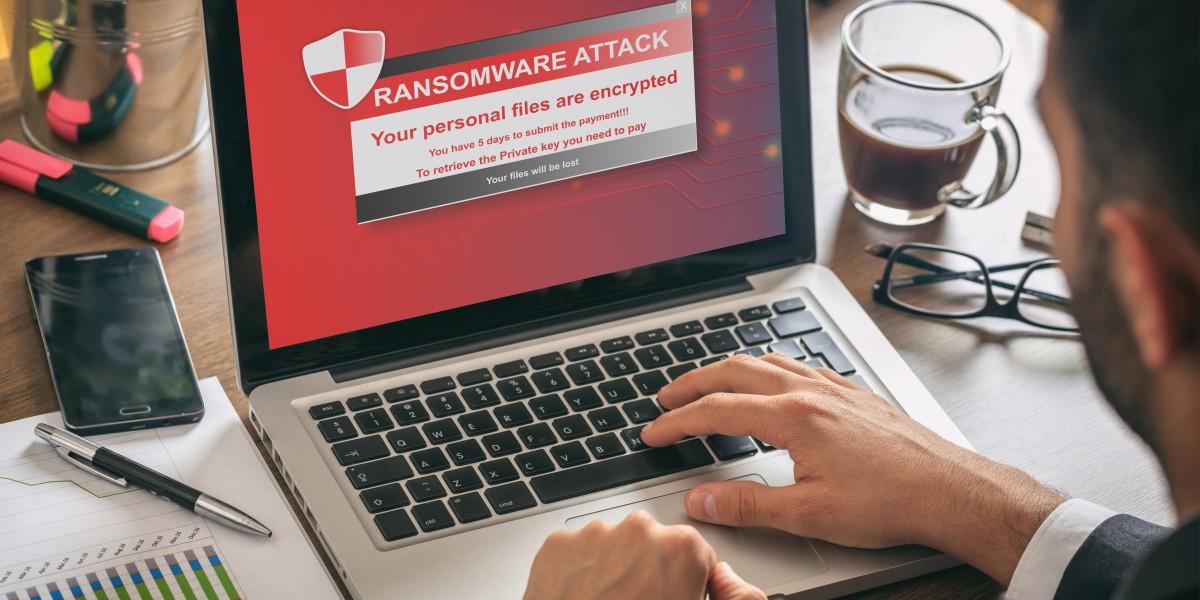4 Cybersecurity Threats (+Solutions and Tips for Every Online User)
Modern technology has introduced a number of conveniences for both individuals and businesses. However, as many of the top online breaches of recent...

Every business today relies on technology and information for every business process. Regardless of industry, tech drives business results. However, this reliance on information technology (IT) has also created new challenges for businesses.
Cybercriminals of every stripe target businesses every day with cyberattacks designed to compromise data, disrupt operations, or steal money. Protecting your business from cyber threats requires a firm understanding of attackers’ motives and the different types of cybersecurity threats that are out there.
What’s a cyber threat? Which cyber threats should you watch out for? How can a cyberattack hurt your business? Most importantly, what can you do to stop cyber threats before they hurt your business?
A cyber threat is, according to the Computer Security Resource Center (CSRC):
“Any circumstance or event with the potential to adversely impact organizational operations (including mission, functions, image, or reputation), organizational assets, individuals, other organizations, or the Nation through an information system via unauthorized access, destruction, disclosure, modification of information, and/or denial of service.”
Another way to define the term “cyber threat” is that it’s something that can result in the loss or theft of data, disruption of IT operations, or other damage to the organization.
What separates cyber threats from IT risks? Cyber threats could be considered a subset of IT risks, and are mostly concerned with attacks by malicious actors. IT risks can cover things that aren’t active threats but may increase the organization’s vulnerability to cyberattacks or IT failures—like having single points of failure in the network or obsolete security patches for software.
The culprits behind cyber threats can vary greatly. Different attackers might have motivations and goals—so the nature of the attacks they conduct will change from one attack to the next. Some of the most common motivations behind cyber threats include:
Need Help Stopping These Threat Actors? Sign up for a Security Assessment Now!
Now that we’ve defined what cyber threats are (and who is likely to be behind them), what are some of the specific threats to know? Some of the most common types of cyber threats companies have to deal with include:
DDoS attacks are a common type of cyberattack that seeks to disrupt operations—typically by overloading a target’s systems with requests, leveraging flaws in their firewall or load balancer, or targeting vulnerabilities in the software applications used. Regardless of the specific strategy used, a DDoS attack attempts to overwhelm the target system so it can’t process legitimate traffic.
According to Security Magazine, in the second half of 2020, there was “an increase of over 12% in the number of potential DDoS weapons available on the internet, with a total of approximately 12.5 million weapons detected.” So, there’s no shortage of DDoS options available to attackers.
Many of these attacks leverage the use of botnets—networks of malware-compromised IT assets—to increase the scale of the attack while hiding its origin point. These botnets also make it harder to stop a DDoS attack in progress since there is no single IP address to block to stop the attack. Instead, every IP address in the botnet needs to be blocked.
Here, having an artificial intelligence (AI) solution that leverages machine learning to identify DDoS attacks in real time and automatically respond to them (or at least notify the IT security team) can be invaluable for preventing service disruptions.
Ransomware is a form of malware that encrypts data on an organization’s network. This renders the data on the network unusable until they can get the encryption key. Shortly after the infection, the victim is given an ultimatum along the lines of “Pay up or lose your data forever.”
According to an article by PenTest Magazine, 51% of surveyed businesses were hit by ransomware in 2020. Additionally, the article noted that for the average small business, the ransom was about $5,900—but the average for all businesses was $178,000.
Countering ransomware starts with prevention. Avoiding downloading suspicious files and links is a good start. However, this isn’t a perfect strategy, as someone in the organization may eventually download the malware eventually.
Another strategy for fighting ransomware is employing remote data backups. With a remote backup of the company’s most important data, the local storage media can be formatted (or replaced). Then, the remote backup of the data can be downloaded.
RELATED: How to Prevent Ransomware
Phishing attacks are a bit different from other cyber threats. Instead of being the threat itself, most phishing attacks are more like a delivery method for other cyber threats (usually malware). In a phishing attack, the attacker sends fraudulent messages to people in an organization to try to trick them into taking a specific action—such as:
Some phishers will spend a lot of time researching their target before writing their fake message. They’ll use this information to create more believable phishing messages where they pose as a higher-up or as a vendor that the recipient is likely to trust (or listen to without question).
The first line of defense against phishing attacks is employee training. It’s important to set guidelines for internal communication for employees to follow to prevent them from falling for a phish.
For example, it can help to set a policy wherein managers, tech support, or others in the organization will never ask an employee for their login details. This way, phishers who ask for logins won’t be able to succeed.
RELATED: Everything You Need to Know About Spear Phishing
Unfortunately, not every cyber threat comes from the “outside.” Some threats come from within the organization itself.
These internal threats can arise for a number of reasons. For example, an employee might be terminated and decide that they want to cause as much harm as possible on their way out. Or, an employee might feel that they aren’t appreciated enough and will try to steal from the company to make up the difference. Others may have joined specifically to get internal access to carry out their attack.
Regardless of the reason, internal attacks can be incredibly damaging and difficult to stop since the attacker has legitimate access to (and knowledge of) the organization’s systems.
Some important steps for minimizing the impact of these attacks include:
“Advanced persistent threat” is a catch-all term for a variety of malware that is designed to be difficult to detect while discretely ferrying data from one system to another. This is a premier tool for cybercriminals to steal data without getting caught—at least for long enough to put the stolen data to use.
How big of a threat are APTs? Big enough that companies are spending billions of dollars per year to stop them. According to projections from Statista, by 2025: “the advanced persistent threat protection market will be worth an estimated almost [sic] 12.5 billion U.S. dollars annually.”
One of the better strategies for countering APTs is to have a solid security information and event management (SIEM) system in place. SIEMs can monitor traffic on a network to identify abnormal use patterns that might indicate an APT that is actively trying to ferry data to a cybercriminal.
So, why is it important to put a stop to cyber threats before they can impact your organization? The primary reason for proactive cyber defense is to avoid the costs that these cyberattacks can incur. These costs include:
Dealing with cyber threats after the fact isn’t cheap. For example, as noted by IBM, the average cost of a data breach in the U.S. is about $8.64 million. While this won’t be the cost for every business, it’s still a sobering number that shows just how much damage a single breach can cause.
Some cyber threats can compromise a company’s competitiveness and damage its reputation. This, in turn, can result in a loss of market share.
For example, say a retail store suffers a major data breach from an APT that compromises the credit card data of all the customers who shopped there over a month-long period of time. After such an event, how likely are customers to return to that store? Odds are, not likely.
In real-world examples of such attacks, it isn’t unusual for a store to see a severe drop in profits immediately after the breach is discovered. For example, Reuters reported that Target had a “46 percent drop in net profit in the crucial holiday quarter” following their headline-making 2013 data breach.
Sometimes, when a company’s intellectual property is stolen, that company may see a sudden flood of knock-off products or services entering the market that uses their stolen IP. In many cases, the knock-offs are coming from overseas competitors who aren’t directly subject to U.S. copyright and trademark law. This can make it difficult to put a stop to the knock-offs.
Worse yet, these fraudulent products and services are often available for a lower cost since the competitor didn’t have to pay for the R&D to create the IP in the first place. This can mean that the knock-offs undercut the legitimate IP holder’s products and services.
If bad security compliance is found to be the cause of a data breach or similar event—or if consumers are negatively impacted by such a breach—the organization may find itself being subjected to fines or even lawsuits.
Legal action will require experienced legal counsel. Unfortunately, this can be prohibitively expensive. According to Legal Match, the average cost of an attorney can range from $150 to $325 per hour (or more for an especially large, high-powered firm). This might not sound expensive, but attorneys may log hundreds of billable hours for a single case.
These are just a few of the potential impacts that can follow from a cybersecurity incident caused by various cyber threats.
Safeguarding your organization from the various cyber threats it faces isn’t easy. Many organizations lack the internal resources needed to completely stop these threats.
This is where a managed security service provider (MSSP) can help.
Managed security service companies offer a combination of expertise, tools, and services to help protect your business from cyber threats. Additionally, some MSSPs can evaluate your current cybersecurity protections and provide suggestions for closing critical gaps that may be preventing your organization from achieving compliance with key security standards.
Are you ready to protect your business now? Reach out to Systems X to get started!

Modern technology has introduced a number of conveniences for both individuals and businesses. However, as many of the top online breaches of recent...

Simple antivirus programs are so 2023. In 2024, businesses will face sophisticated cyber threats, including ransomware, phishing attacks, and...

Data breaches continue to dominate headlines around the world. In 2019, 88% of organizations worldwide experienced a type of spear-phishing. Also,...